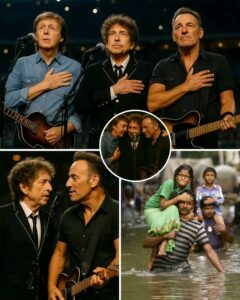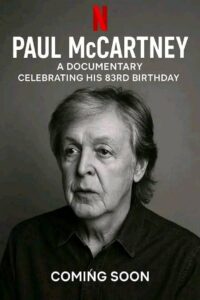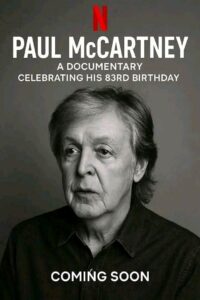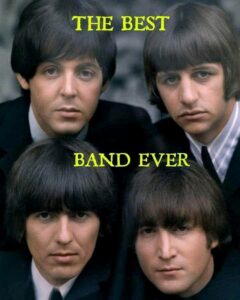
Last night at Madison Square Garden, as the final chords of Paul McCartney’s emotionally charged ballad “Here Today” faded into silence, something unusual happened — something that reminded everyone in attendance that some connections never truly end, even with death.
“Here Today,” written in 1982 after John Lennon’s tragic death, has long been one of McCartney’s most intimate and tearful tributes. Fans know the story behind it — the regret Paul carried, the things he never got to say to John, and the bittersweet beauty of friendship lost too soon. But as Paul’s voice trembled on the final line — “And if I say I really knew you well, what would your answer be?” — he noticed something unusual in the front row.
An elderly

Security had seen the man arrive alone, ticket in hand, and quietly take his seat hours before the show began. He spoke to no one. He sang no lyrics. He merely watched. And when Paul sang “Here Today,” the man pressed the sketch to his chest like a sacred relic.
Moved beyond words, Paul asked after the show to meet the man. He was quickly brought backstage, still clutching the drawing. Paul, emotional but composed, extended a hand. But the man didn’t shake it. Instead, he simply handed Paul a weathered envelope and said, “I was John’s schoolmate. I’ve kept this for 60 years, waiting for the right person to give it to.”
Then he left, without another word.
Inside the envelope was a single piece of yellowed paper, fragile with age but still legible. It was a lyric — one that no one in Beatles lore had ever seen or mentioned.
Below the verse, in unmistakable handwriting, was a simple signature: “John.”
Paul stood frozen, paper in hand, his eyes scanning the lyrics over and over. For a long time, he said nothing. Then, quietly, he stepped outside into the humid New York night and looked up toward the stars.
“So you’re still writing, aren’t you, John?” he whisper.
The Beatles’ story has been told and retold in every imaginable form — books, films, documentaries, musicals. But this brief exchange between Paul McCartney and an anonymous man has added a new page to that narrative — one that feels like it came straight from the cosmos.
Fans and historians have long speculated about the many unwritten or unfinished works Lennon may have left behind. But this lyric — simple, poetic, deeply personal — seems to bridge the silence between two old friends. Not as celebrities. Not as icons. But as boys from Liverpool who once dreamed of making music that would last forever.
The sketch itself, later photographed and confirmed as an early fan drawing done around 1958, features John and Paul in their teenage years — sitting on a curb near Penny Lane, guitars across their knees. It’s a scene many Beatles fans have imagined, but few have ever seen depicted so intimately.
Who was the man? Some internet sleuths are already at work trying to identify him. One theory is that he was a former Quarry Bank schoolmate — the school both Lennon and McCartney briefly attended. Others think he may have been someone from The Cavern Club days — a quiet figure in the background, keeping watch all these decades.
But perhaps the mystery is part of the message. “It felt like John sent him,” Paul reportedly told a crew member backstage. “Or maybe he was John, in some strange way.”
The lyric, both melancholy and comforting, may never make its way into an official recording. But it’s likely that Paul — who has often said music is his way of processing grief — will find a way to honor it. Some fans believe it may appear in one of his upcoming shows, or perhaps as a hidden track on a future project.
In the end, what lingers most is not the lyric or the sketch or even the moment itself — but the idea behind it.
Friendship, when built on music and shared youth, doesn’t vanish. Even in silence, even in death, it echoes. In memories. In lyrics. In the sigh of a guitar chord carried by a summer wind.
Last night, as New York blinked with city lights and the last of the concertgoers drifted into the streets, Paul McCartney stood quietly on a rooftop, the lyric in his pocket.
Far below, someone played “Let It Be” on a street corner piano.
And somewhere — whether in memory or music or spirit — John Lennon played rhythm right along.




